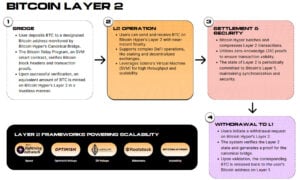Australia extends crypto regulations to stablecoins and tokenized assets
Australia is tightening its grip on the crypto industry as regulators move to redefine what falls under financial oversight.
- Regulators in Australia have updated guidance to apply financial laws to a wider range of digital assets, including stablecoins, staking, and tokenized products.
- New guidelines clarify that Australian law also applies to offshore and decentralized platforms serving local users.
- A no-action position has been granted until June 30, 2026, to allow firms time to adapt and apply for licenses.
- ASIC is proposing relief for stablecoin and wrapped token distributors, with public feedback open until November 12, 2025.
The Australian Securities and Investments Commission (ASIC) has broadened its regulatory scope on digital assets. On Wednesday, October 29, the commission released updated guidance introducing changes to how existing financial services laws apply to a wide range of blockchain-based products, including stablecoins, staking services, wrapped tokens, and tokenized securities.
The revised document sets clearer expectations and standards for platforms that store or manage digital assets. It affirms that Australian financial law applies to decentralized and offshore entities that offer services to users in Australia, effectively closing loopholes exploited by global platforms.
ASIC Commissioner Alan Kirkland emphasized the importance of the move in maintaining regulatory oversight. “Distributed ledger technology and tokenisation are reshaping global finance,” adding that, “ASIC’s guidance provides the clarity that firms have been calling for to innovate confidently in Australia.”
The regulatory commission confirmed that many commonly traded digital assets are already financial products under existing law and will continue to be so under the government’s upcoming digital asset platform and payments legislation. This means many providers must secure an Australian Financial Services Licence (AFSL) to operate legally, ensuring consumer protections are in place and allowing enforcement action when needed.
ASIC also released an updated Info Sheet 225, which introduced 18 new classification examples, covering areas like tokenized real estate, exchange in-house tokens, gaming NFTs, and Bitcoin.
Australia’s crypto oversight: ASIC grants firms time to adapt
Recognizing that service providers will need time to align with the updated rules, ASIC has granted a no-action relief period until June 30, 2026. During this transition, the regulator proposes targeted relief for distributors of stablecoins and wrapped tokens, as well as custodians managing digital assets that qualify as financial products.
Public feedback on the draft relief instruments is open until Nov. 12, 2025, as ASIC works in tandem with the Treasury on a broader overhaul of the nation’s digital asset regulatory framework.
Meanwhile, the latest extension marks a step toward establishing clearer regulatory guardrails for crypto innovation, aiming to provide stronger consumer protections and operational certainty for emerging businesses. It follows the country’s broader push toward comprehensive crypto oversight, which has recently included proposals to regulate crypto ATMs and a draft bill outlining a licensing framework for digital asset providers.
You May Also Like

Mastercard Goes All Into Web3 Via Acquisition of Zerohash for Nearly $2B

Bitcoin Hyper Coin Review 2025 — Is it Safe to Invest in? Everything You Need to Know
